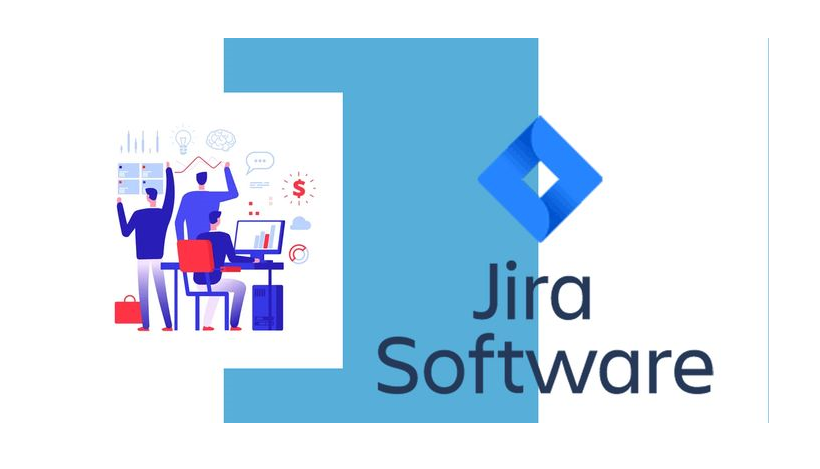This article gives an in-depth perspective into Business Transformation, Management Consulting, and Strategic Planning
Business Process Improvement is not only essential but it is practical in todays business environment. The ability to adapt and improve continuously is not just a competitive advantage—it’s a necessity. Companies are under immense pressure to optimize their operations, reduce costs, and enhance their overall performance. Business Process Improvement (BPI) is a critical strategy that enables organizations to achieve these goals by systematically analyzing and refining their processes.
BPI is more than just fine-tuning existing workflows; it involves a fundamental rethinking of how business is conducted. This often requires a comprehensive approach that integrates business transformation, management consulting, and strategic planning. Business transformation is about making profound changes to how a company operates, often involving a complete overhaul of existing processes and systems. Management consulting provides the expertise and strategic insight needed to identify areas for improvement and implement effective solutions. Strategic planning ensures that all improvements are aligned with the organization’s long-term objectives, providing a clear roadmap for sustainable success.
This article will explore Business Process Improvement in depth, focusing on the critical roles that business transformation, management consulting, and strategic planning play in driving successful BPI initiatives. Through detailed analysis, best practices, and real-world examples, we will illustrate how these components can be leveraged to optimize operations, enhance customer satisfaction, and ensure long-term growth.
Understanding Business Process Improvement
Business Process Improvement (BPI) is a structured approach aimed at enhancing the efficiency and effectiveness of an organization’s processes. The goal is to achieve measurable improvements in key performance metrics such as cost, quality, service, and speed.
Key Components of BPI
- Process Mapping and Analysis:
- Process Mapping: Involves creating a visual representation of current processes to identify bottlenecks, redundancies, and inefficiencies.Process Analysis: A thorough examination of the mapped processes to assess their effectiveness and identify areas for improvement.
Table 1: Process Mapping vs. Process Analysis
| Aspect | Process Mapping | Process Analysis |
|---|---|---|
| Purpose | Visualize the current workflow | Assess effectiveness and identify improvement areas |
| Outcome | Process maps and flowcharts | Data-driven insights on process performance |
| Tools Used | Flowcharts, BPM software | Statistical analysis, performance metrics |
| Focus | Understanding the current state | Identifying gaps and inefficiencies |
- Identifying Improvement Opportunities:
- Streamlining Processes: Simplifying processes to reduce complexity and improve efficiency.
- Automation: Leveraging technology to automate repetitive tasks, reducing manual errors and speeding up operations.
- Waste Elimination: Identifying and removing non-value-adding activities from processes.
- Implementing Changes:
- Change Management: Ensuring smooth implementation of new processes by managing resistance and engaging stakeholders.
- Training and Development: Providing necessary training to employees to adapt to new processes.
- Monitoring and Continuous Improvement:
- Performance Monitoring: Regularly tracking process performance against set benchmarks.
- Continuous Improvement: Iteratively refining processes to achieve incremental gains over time.
Business Transformation: The Core of BPI
Business transformation refers to significant changes that affect an organization’s operations, often involving a shift in strategy, structure, or culture. It is a comprehensive approach that aligns business processes with organizational goals to achieve long-term success.

The Role of Business Transformation in BPI
Business transformation is central to BPI because it provides the overarching framework for substantial and lasting improvements. It involves a holistic examination of the organization’s operations, strategy, and culture to identify areas where radical changes are necessary.
- Cultural Shift:
- Business transformation often requires a change in organizational culture. Employees must embrace new values, behaviors, and ways of working. Leadership plays a crucial role in fostering this cultural shift by communicating the vision and engaging employees throughout the transformation process.
Table 2: Traditional Culture vs. Transformed Culture
| Dimension | Traditional Culture | Transformed Culture |
|---|---|---|
| Focus | Efficiency and cost control | Innovation and customer-centricity |
| Leadership Style | Hierarchical, top-down | Collaborative, inclusive |
| Employee Involvement | Limited | High |
| Change Approach | Reactive | Proactive and continuous |
- Technology Integration:
- Technology plays a critical role in enabling business transformation. Whether it’s through automation, advanced data analytics, or adopting new digital platforms, technology helps streamline processes and improve decision-making.
- Customer-Centric Approach:
- A key aspect of business transformation is shifting towards a customer-centric approach. This involves redesigning processes to enhance customer experiences, improve service delivery, and build stronger customer relationships.
- Agility and Adaptability:
- Business transformation requires organizations to become more agile and adaptable. This means developing processes and systems that can quickly respond to changes in the market, customer demands, and technological advancements.
Management Consulting: Guiding the Path to Improvement
Management consulting involves providing expert advice and strategic solutions to organizations looking to improve their performance. Consultants bring a wealth of experience and industry knowledge that can help businesses identify inefficiencies and implement effective BPI strategies.
The Role of Management Consulting in BPI
Management consultants play an essential role in BPI by offering objective analysis, best practices, and change management expertise. They guide organizations through the BPI process, ensuring that improvements are strategically aligned with business goals.
- Objective Analysis:
- Consultants provide an unbiased perspective, identifying issues and opportunities that internal teams might overlook.
- Best Practices and Industry Expertise:
- With experience across various industries, consultants bring proven methodologies and best practices that can be tailored to the specific needs of an organization
Table 3: In-House BPI vs. Consulting-Driven BPI
| Aspect | In-House BPI | Consulting-Driven BPI |
|---|---|---|
| Perspective | May be biased due to internal politics | Unbiased, objective |
| Methodology | Based on internal experiences and knowledge | Based on industry best practices |
| Speed of Implementation | Slower due to internal resistance | Faster with focused expertise |
| Resource Utilization | Limited to internal capabilities | Access to a broader range of expertise |
- Change Management:
- Successful BPI often hinges on effective change management. Consultants help manage the human side of change, addressing resistance and ensuring that employees are engaged and supportive of new initiatives.
- Measurable Results:
- Consultants focus on delivering tangible results. They help organizations set clear goals, establish performance metrics, and measure the impact of BPI initiatives to ensure they deliver the desired outcomes.
Strategic Planning: Aligning Processes with Organizational Goals
Strategic planning involves defining an organization’s direction and making decisions about allocating resources to achieve its goals. It is a critical component of BPI, as it ensures that process improvements are aligned with the broader strategic objectives of the organization.
The Role of Strategic Planning in BPI

Strategic planning ensures that BPI efforts are not just isolated improvements but are part of a broader strategy aimed at achieving long-term organizational goals.
- Goal Setting:
- Strategic planning begins with setting clear, measurable goals that guide the BPI initiative. These goals should be aligned with the organization’s mission and vision.
- Resource Allocation:
- Effective BPI requires the appropriate allocation of resources. Strategic planning helps determine where to allocate time, money, and personnel to achieve the desired outcomes.
Table 4: Resource Allocation in BPI
| Resource Type | Strategic Allocation | Impact on BPI |
|---|---|---|
| Financial Resources | Investment in technology and training | Enables process automation and skill development |
| Human Resources | Assigning skilled personnel to BPI projects | Enhances implementation and innovation |
| Time | Allocating sufficient time for BPI initiatives | Ensures thorough analysis and successful implementation |
| Technology | Investing in modern tools and platforms | Facilitates process optimization and efficiency |
- Risk Management:
- BPI initiatives often involve significant changes that can introduce risks. Strategic planning includes identifying potential risks and developing mitigation strategies to ensure that BPI efforts proceed smoothly.
- Sustainability:
- One of the key benefits of strategic planning is its focus on sustainability. It ensures that the improvements made through BPI are not just short-term fixes but are sustainable in the long term, providing ongoing value to the organization.
Real-World Examples of BPI Success
The impact of BPI can be best understood through real-world examples of organizations that have successfully implemented BPI initiatives.
- General Electric (GE):
- GE is renowned for its commitment to operational excellence through BPI. The company has implemented methodologies such as Six Sigma and Lean, leading to significant cost savings and efficiency gains.
Table 5: GE’s BPI Achievements
| Methodology | Focus Area | Result |
|---|---|---|
| Six Sigma | Quality control and defect reduction | Reduced defects and improved product quality |
| Lean Manufacturing | Waste elimination and process efficiency | Streamlined operations and reduced costs |
| Data Analytics | Predictive maintenance and decision-making | Improved equipment reliability and reduced downtime |

- Toyota:
- Toyota’s success in BPI is evident in its Lean manufacturing principles, which focus on continuous improvement and waste reduction. These principles have been widely adopted across various industries.
- Amazon:
- Amazon’s commitment to customer satisfaction is driven by continuous BPI. The company constantly refines its processes, from inventory management to delivery, to enhance efficiency and provide a better customer experience.
Conclusion
Business Process Improvement is not just about making incremental changes to existing processes; it is a comprehensive approach that requires a strategic mindset, the right expertise, and a commitment to continuous improvement. By integrating business transformation, management consulting, and strategic planning, organizations can achieve significant gains in efficiency, customer satisfaction, and overall performance.
In today’s fast-paced business environment, the ability to continuously improve is essential for long-term success. Organizations that embrace BPI as a core strategy, guided by a clear vision and supported by expert advice, will be better positioned to navigate the complexities of the modern marketplace and achieve sustainable growth.
The tables provided throughout this article highlight the differences in approaches, resources, and outcomes associated with BPI, emphasizing the importance of a structured and strategic approach. As demonstrated by real-world examples, BPI has the power to transform organizations, driving efficiency and innovation while aligning processes with broader business goals.
Curated Golden Reads For You :





I’m still learning from you, as I’m making my way to the top as well. I definitely liked reading all that is written on your site.Keep the posts coming. I enjoyed it!
You should take part in a contest for one of the best blogs on the web. I will recommend this site!
Today, I went to the beach with my children. I found a sea shell and gave it to my 4 year old daughter and said “You can hear the ocean if you put this to your ear.” She placed the shell to her ear and screamed. There was a hermit crab inside and it pinched her ear. She never wants to go back! LoL I know this is entirely off topic but I had to tell someone!
You actually make it seem so easy with your presentation but I find this topic to be actually something that I think I would never understand. It seems too complicated and very broad for me. I’m looking forward for your next post, I will try to get the hang of it!
My admiration for your creations is as substantial as your own sentiment. The visual presentation is tasteful, and the written content is sophisticated. I’m confident you’ll be able to resolve this issue efficiently.
Your blog is a beacon of light in the often murky waters of online content. Your thoughtful analysis and insightful commentary never fail to leave a lasting impression. Keep up the amazing work!